You’ve probably heard of B2B marketing before, but what does it really mean for your business?
Whether you’re new to marketing or experienced, the right B2B strategy can make a world of difference to your marketing success.
In this guide, we’ll look at the most effective marketing strategies and tools to help you reach your target audiences and strengthen your company’s position in the market.
Read on for the secrets of successful B2B marketing and concrete tips you can implement immediately – before, during and after the sale.
Introduction to B2B marketing
When we talk about B2B marketing, we’re not just talking about digital marketing. If you sell products or services to other companies, online marketing has become increasingly important, but the B2B customer journey is long and requires you to have many touchpoints online and offline.
Online marketing is a no-brainer and the question is not whether you should use B2B online marketing strategies, but how and which platforms you should be using.
Business-to-business sales is not just about selling products or services. It’s much more about understanding the interests, needs and pains of other businesses (your customers) and how you can tailor solutions that either save them money, streamline work or similar.
What is B2B marketing?

B2B marketing is short for “business-to-business” and is the marketing strategies companies use to increase awareness of their company and sell their products or services to other businesses rather than private consumers with B2C marketing (business-to-consumer).
Simply put, you have, or work for, a company that has products you want to sell and B2B marketing exposes your company to other companies and attracts new customers.
It’s easy, right?
Unfortunately, it’s easier said than done, because businesses don’t make impulse purchases in the same way that consumers do and therefore the buying process is often significantly longer for B2B.
There are many more touchpoints and not least more stakeholders and decision-makers involved in the purchase.
All companies’ purchases involve careful consideration before a purchase is made, researching the market more deeply, considering your competitors’ solutions and exploring the possibility of unique and tailor-made solutions.
The decision-making process from first exposure to a completed sale is therefore long, requires a lot of resources, nurturing and conviction and just one misstep in the process, or lack of follow-up, can result in many months of hard and expensive work going down the drain.
Buying trips of many months are not uncommon. Rather, the abnormality is if the buying journey is days or weeks.
In this post, you’ll get tools and tools to uncover the entire B2B customer journey.
What is the difference between B2B and B2C marketing?
There are huge differences between B2B and B2C marketing and it’s important not to confuse the methods if you want to get the most out of your marketing efforts.
The target audience, strategies, channels and communication are different.
At the same time, the buying motives, needs and the amount of people involved are significantly different, where consumers often make purchasing decisions based on emotions and impulses alone, the motives are often focused on ROI and efficiency.
You’re talking to the same people, because consumers are also the ones who work in companies and make the decisions, but they need to think about the good of the organization and be accountable for their actions to someone other than themselves.
Take a look at the table below, which shows the direct differences between B2B marketing and B2C marketing:

Despite the clear differences, especially in relation to the consideration phase and decision-making process, there are still some common features for both target groups.
There are also companies that sell products or services to both the B2B segment and the B2C segment, where again there will be commonalities but also differences in the buying journey.
An example of overlapping “products” is hotels that sell both private stays and business conferences.
B2B marketing strategies

Marketing is all about the recipient, so it’s important to know that just as B2B marketing is different from B2C marketing, B2B marketing is not a fixed thing.
Depending on your product, service and target audience, your business marketing should also be customized to your target audience.
Selling copy machines for office environments requires a completely different marketing strategy than selling a CRM system.
We’ll get into some of the best and most commonly used marketing strategies for B2B companies a little further down, but before we get that far, let’s take a look at the B2B buyer’s journey.
The B2B buying and customer journey
The buying journey for B2B companies is often complex and involves multiple touchpoints and decision makers.
The process can be broken down into different stages, each of which requires specific attention and strategies to ensure prospects move from need recognition to final purchase decision.
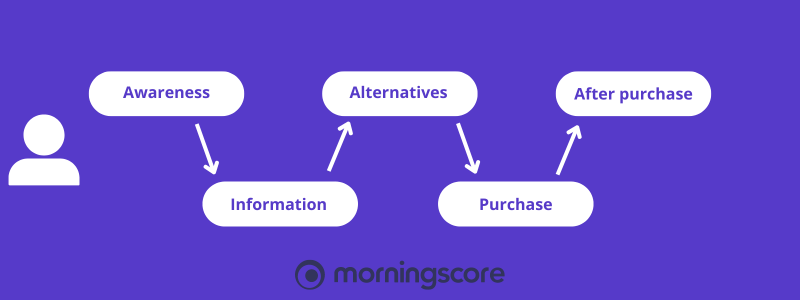
1. awareness
- Description: This phase begins when the company becomes aware of a problem or need that needs to be addressed.
- Meaning: The company begins to realize that there is a challenge affecting their operations, finances or efficiency and that a solution is needed.
- General: Marketers should focus on creating content that identifies, speaks into and emphasizes common problems and needs of the target audience to capture their attention.
2. Search for information
- Description: In this phase, the company actively searches for information about possible solutions to their problem.
- Meaning: The business is gathering information about different products or services that could solve their problem.
- General: It’s important to have informative and easily accessible content, such as blogs, whitepapers and case studies that can help potential customers understand your solutions.
3. Assessing alternatives
- Description: The company evaluates the different options they have found and compares them to find the best solution.
- Meaning: It involves a detailed analysis of the features, pros, cons and costs of the different solutions.
- General: Here it is important to highlight unique selling points and differentiating factors to stand out from the competition.
4. Purchase decision
- Description: In this phase, the company makes a final decision on which solution to invest in.
- Meaning: The decision can involve multiple stakeholders and the approval process can be complex.
- General: Having clear and compelling offers, as well as an easy and efficient buying process, is crucial to facilitate the decision. It should also be easy to get in touch with a real person rather than self-service.
5. Post purchase
- Description: After the purchase, the business evaluates their choice and decides if they are satisfied with the solution.
- Meaning: A positive experience can lead to repeat purchases and long-term customer relationships.
- Overall: Support and follow-up communication are essential to ensure customer satisfaction and build loyalty.
Misconceptions in B2B marketing
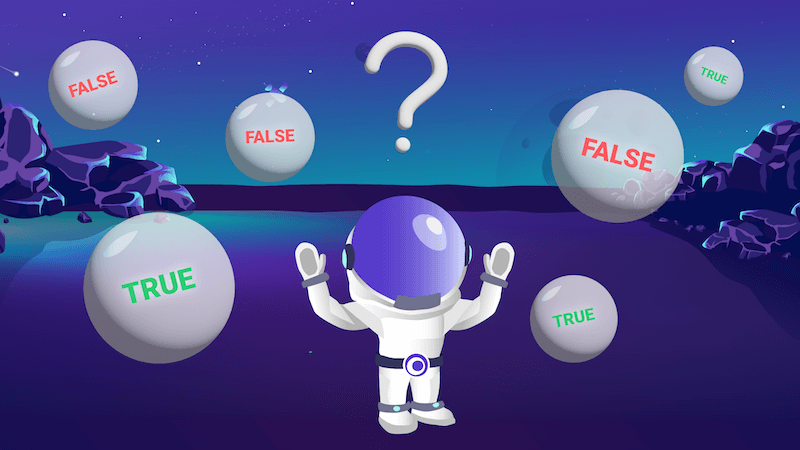
One of the most common misconceptions in B2B marketing is that the same techniques and strategies used in B2C can be directly transferred to B2B.
However, this is far from the case. B2B marketing has different challenges and requires a different approach.
Here are some of the most common misconceptions in B2B marketing and how to avoid them:
“B2B customers are not emotionally driven”
A big misconception is that B2B customers make decisions based solely on logic and rational factors like price and functionality.
In reality, B2B buyers are also influenced by emotional factors such as trust, relationships and reputation. Building a strong brand and establishing trust through storytelling and authentic communication can be just as important as product features.
At the end of the day, B2B buyers are the same people who are B2C buyers in the afternoon.
The difference is that the emotional aspect isn’t as crucial because it’s about acting in the company’s best interests rather than your own as a buyer.
“There is a single decision maker”
Another mistake is to assume that there is only one decision maker in B2B buying.
In most cases, buying decisions in B2B companies are complex and involve multiple stakeholders, including management, users and technical experts.
Therefore, it’s important to understand and address the needs and concerns of all parties involved through your communication and content and not only the user of your product which, in many cases, can’t take the final decision.
“Slow and complex processes”
Although B2B sales processes are typically longer and more complex than B2C, that doesn’t mean speed and efficiency can be ignored.
An effective B2B strategy should also focus on reducing friction in the buying process through clear information, easy access to resources and quick response to queries.
Therefore, it’s ultimately up to your marketing, communications and sales staff to set the pace by delivering such good and relevant information that many of the concerns or lack of knowledge are quickly removed.
“Facebook marketing is only for B2C”
Many B2B companies mistakenly believe that Facebook advertising is primarily effective for B2C markets. In reality, advertising on Meta’s platforms can be highly effective for B2B, especially when it comes to storytelling, breaking down concerns and pushing customer cases.
A strong online presence can help B2B companies reach their target audiences more precisely and measurably – on LinkedIn, Google or even Facebook.
B2B marketing channels – here’s how
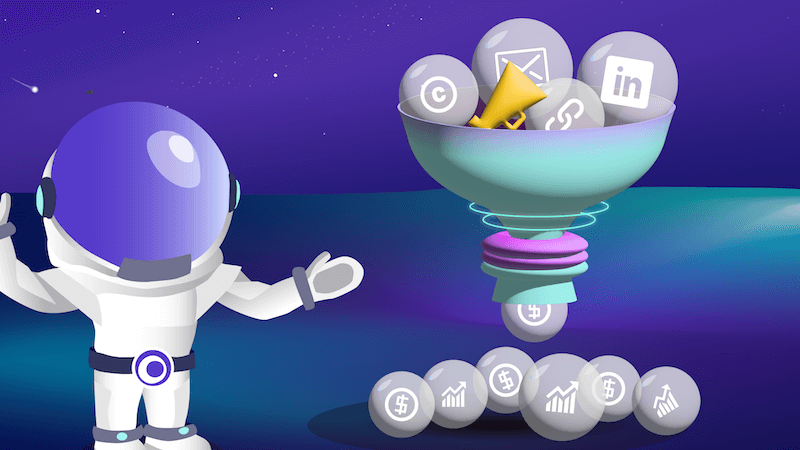
Choosing the right marketing channels is crucial to reach the right target audience for your B2B marketing.
To be successful with B2B marketing, it’s important to use a variety of marketing channels effectively.
SEO, Google Ads, email marketing, outdoor marketing, trade fairs and social media are all essential channels that can help you reach your target audiences, generate leads and build long-term relationships.
SEO (Search Engine Optimization)
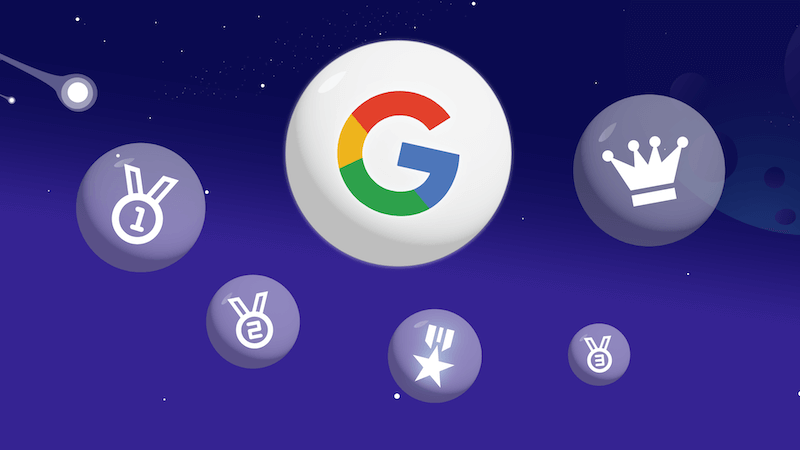
SEO is the foundation of digital marketing and is essential for attracting organic traffic to your website. By optimizing your website and its content for search engines, you can make sure your business is found by potential customers when they search for relevant products or services.
And to be clear: Yes, there is a lot of Googling in B2B.
How:
- Keyword research: Use Morningscore’s keyword research tool to find relevant keywords for your industry.
- On Page SEO: Optimize on page SEO with relevant keywords in titles, meta descriptions, headers and content.
- Content Creation: Create valuable content such as blog posts, whitepapers and e-books that address your customers’ problems and needs.
- Link building: Get backlinks from credible sources to improve your site’s authority and ranking in search results.
Google Ads
Google Ads allows you to reach your target audience through paid ads that appear in Google Search and on partner websites.
It’s an effective way to generate leads quickly and targeted. Unlike SEO, which is organic and only costs time resources, Google Ads costs per click on your ad.
How:
- Keywords: Choose relevant keywords based on the search patterns of your target audience. Do a keyword analysis to find out what your potential customers are searching for.
- Ads: Create laser sharp ad titles and descriptions to attract as many visitors as possible.
- Landing pages: Make sure your landing pages are optimized for conversions with clear call-to-actions. Every click on your ad costs money, so spend time making a perfectly optimized page.
- Retargeting: Use retargeting to reach users who have previously visited your website. It’s a great way to stay top-of-mind and not be forgotten.
E-mail marketing
Email marketing is an effective channel for retaining customers and building relationships. Through personalized and relevant emails, you can inform, engage and nurture your leads.
However, you need to be careful with the use of emails. Too many emails in too short a time often leads to annoyances rather than positive interactions. Send emails in moderation and ONLY the very, very most relevant content.
And no, it’s not relevant to write out to your entire email list that they can have a sales talk. Provide value.
How:
- Segmentation: Divide your email list into segments based on behavior, preferences and demographics.
- Automation: Use email automation to send targeted campaigns and personalized follow-ups.
- Content: Send valuable content such as product updates, case studies, how to and benefits of your product.
- Tracking: Measure the effectiveness of your campaigns using open rates, click-through rates, conversions and meeting bookings.
Outdoor marketing
Outdoor marketing, such as signage and advertising at trade fairs, can be a powerful way to increase brand awareness and attract new customers.
Many businesses have become a little blind to the power of offline media and operate solely online – mainly because of tracking options but tracking isn’t everything.
There is a big difference in where your target audience is and some companies will have more success with offline campaigns than others.
How:
- Location: Choose strategic locations where your target audience is often located.
- Design: Create eye-catching designs that clearly communicate your message.
- Integration: Combine outdoor marketing with digital campaigns to amplify your efforts.
Trade fairs
Attending trade fairs and conferences is an excellent way to network and meet potential customers face-to-face.
It’s one of the most effective relationship-building methods because you let people talk to people in a dialog rather than the one-way communication that marketing usually is.
How:
- Preparation: Plan your presence by preparing presentations, brochures and product demos.
- Engagement: Actively interact with attendees and use the opportunity to get valuable feedback.
- Follow-up: Follow up with the contacts you’ve met to build on the relationships created.
Social media
Although social media is often associated with B2C, it can also be very effective for B2B marketing.
Social media isn’t just LinkedIn, even if we are talking about B2B marketing. Meta’s platforms are also super relevant for B2B companies, even though it’s often misunderstood that it’s only for B2C.
How:
- Platform: Focus on platforms that are relevant to your industry. Which platform depends on who your target audience is.
- Content: Share valuable content such as articles, infographics and videos that address your audiences’ interests and the value your product provides.
- Engagement: Join conversations, groups and forums to build relationships and establish yourself as an expert in your industry.
Finally, it’s worth mentioning that you should neither limit yourself to the above channels nor choose just one.
Your marketing should be seen in a larger perspective, which is about achieving maximum visibility and making sure your messages are exposed to your target audience far and wide.
Social media isn’t just LinkedIn for B2B. Facebook, Instagram, Pinterest, Reddit, Tiktok, etc. can all be the right channel for your marketing.
Get started with B2B marketing and everything behind the curtains

There are many elements to B2B marketing that go beyond direct communication in the form of content, advertising, etc.
There are many processes that need to be in place to handle incoming leads as the buying phase approaches.
Define your audience and segmentation
To target your marketing effectively, you need to know your audience. Use demographic data, industry analysis and customer profiles to segment your audience. This helps you tailor your messages to hit the mark.
For B2B segmentation, it’s not the same as segmenting consumers, where you typically want specific demand for products or services. B2B demand is more of a symptom search for some issues a company has.
You need to clearly define who in a company is tasked with finding solutions to problems with products that you offer.
For example, your core target audience may be IT staff even if the final decision-maker is the company’s CTO, because the decision-maker is only involved later in the buying journey.
How: Create a detailed buyer persona for each segment. Include information such as job title, challenges, revenue, number of employees and buying behavior.
Based on your persona, you can start looking into which channels and what types of content to create and promote.
Demand in the market
Understand market demand by analyzing trends, competitors and customer needs. This gives you insight into what drives your potential customers.
Broadly speaking, you can break it down into:
- Market demand and volume
- Competitors and their visibility
- Prioritization of channels
For demand and volume, you look at what searches potential customers make on Google to find the solutions you offer. A classic keyword analysis is used here to give you an overview of your potential customers’ search behavior.
Use tools like Morningscore, Google Trends, searchvolume.io, Storybase and market research to get data. Combine the data with feedback from your company’s sales department and customer service.
To research your competitors’ visibility, you can use Morningscore.
Once you understand demand, volume and competitors, you can select and prioritize marketing channels and campaigns.
Get a grip on tracking
Tracking is essential to measure the effectiveness of your campaigns. Use tools like Google Analytics and CRM systems to track the customer journey.
When setting up your tracking, it’s important to track both macro and micro conversions that potential customers go through.
Your tracking is important so that your marketing is not influenced by personal bias, but rather backed by data.
Macro conversions are the vital conversions, such as setting up trials, booking demos, booking meetings and similar actions close to the purchase action.
Micro conversions are the softer conversions where your leads are warming up and are typically at an earlier stage of the buying process. For example, downloading a white paper, signing up for a newsletter, etc.
How: Implement tracking codes in your campaign links to track the source of your leads. Set up goals in Google Analytics to measure conversions and specify exactly what actions are taken so you know what are email signups, downloads, booked meetings etc.
Go broader with omni-channel
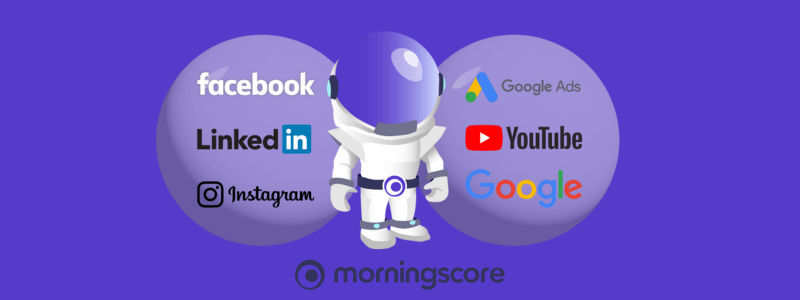
An omni-channel approach makes sure you reach your customers across multiple channels such as email, social media, and your website.
Omni-channel can be beneficial for everyone, but it’s especially important for B2B marketing due to the extra-long customer journey.
At the same time, omni-channel marketing also allows you to reach a wider audience and makes sure you don’t get left behind when you’re not visible in the full picture if your competitors are.
Many companies become narrow-minded and go to the classic channels, where B2C companies go to Facebook, Instagram and Google Ads while B2B companies market themselves on LinkedIn and Google Ads.
It’s important to think of the entire customer journey as a silo and advertise through the entire journey from awareness to purchase.
Your B2B marketing shouldn’t just be on LinkedIn and Google Ads. B2B marketing also happens on Facebook, because after all, the same people who are consumers also work in the companies that are your potential customers.
Your omni-channel strategy should consider:
- SEO and content marketing for organic visibility.
- Paid Ads on Google and social media that expose your products and services throughout the customer journey.
- Focus on being a thought leader by sharing knowledge, experience, cases and being a trustworthy partner.
- Outdoor marketing is often an overlooked element of potential exposure opportunities that should be actively included in your marketing strategy.
Give before taking
Trust is very important for business-to-business deals. That’s why it’s important that you, as the selling party, build trust from the start and provide free value.
Offer valuable content such as eBooks, whitepapers and webinars before you ask for anything from your customers. This builds trust and positions you as an expert.
How: Create a content calendar where you plan to publish free resources regularly. Promote these via email, social media and on your website.
Focus on people rather than company as sender
Humanize your marketing by highlighting the people behind or involved in your business. This creates a stronger connection with your customers.
Often, especially on company websites and social media, you see that the company is the clear sender. This creates a distance between a potential buyer and your company.
People deal with people and the buyer and seller are two people working in separate companies – they are still both people and will have a better connection than an elevated company that you have no relationship with.
Let the people shine through on both social media and your website so potential buyers know who to talk to and that there are real people behind the facade.
How: Use employee faces and stories in your campaigns. Share employee insights and experiences through blogs and videos.
Customer retention strategy
It is usually much cheaper to retain existing customers than it is to acquire new ones. A retention strategy is therefore essential to increase the lifetime value of your customers.
Develop a strategy to retain your customers. Offer loyalty programs, regular updates, map signs of upcoming churn and, not least, have a CRM system that your Customer Success Managers are trained in from top to bottom to ensure a good customer relationship and be proactive.
How: Implement a CRM system to keep track of customer interactions and preferences and follow up with your customers. Use the data to offer personalized updates, offers or loyalty programs.
Know your CLV (Customer Lifetime Value)
Understand the value of your customers over time. It will help you decide how much to invest in acquisition and retention.
Without an estimated lifetime value, you’re working blind without knowing how many resources your company can afford to throw into each customer in both support for existing customers as well as resources chasing new sales.
In other words: Without an estimate of the lifetime value of your customers, you don’t know how much money a customer should cost.
How: Calculate CLV by multiplying the average order value by the number of purchases per year and the average customer lifetime with your company (Average customer lifetime x your profit per year minus the cost of a new customer = LTV (life time value).
Lead management process
A well-defined lead management process is essential for converting potential customers into paying customers.
The process should be structured, but flexible enough to adapt to the unique needs of different leads.
Here’s a guide to creating a clear process for handling leads from first contact to closed sale.
Lead generation & prospecting
The first step where potential leads are identified and sought out. This can be done through various channels such as email marketing, social media, trade shows, and inbound marketing.
How:
- Use CRM software to collect data from various sources such as Hubspot.
- Define your ideal customer profiles (ICP) and buyer personas to target your efforts.
- Use tools like LinkedIn Sales Navigator and other lead generation tools to find potential leads.
Lead qualification
Once you have identified potential leads, they need to be qualified to ensure they fit your ideal customer profile. This can be done through an initial conversation or a questionnaire.
How:
- Use the BANT (Budget, Authority, Need, Timeline) methodology to qualify leads.
- Perform discovery calls to ask open-ended questions and assess a lead’s needs and potential.
- Categorize leads as hot, cold or lukewarm based on their answers (or green, yellow and red if you prefer).
Lead nurturing
Not all leads are ready to buy right away. In fact, when it comes to B2B, very few are.
Lead nurturing is about building relationships and keeping leads warm until they are ready to make a buying decision.
How:
- Use a marketing automation platform to send personalized emails based on a lead’s behavior and interests.
- Share valuable content such as e-books, webinars, and case studies to maintain interest.
- Use CRM to track and analyze interactions with leads to adapt your nurturing strategies.
Lead scoring
Lead scoring helps prioritize leads based on their likelihood to convert.
This is done by awarding leads points based on actions they take in the process. For an SEO tool like Morningscore, this could be based on how long you’ve spent during your trial, whether you add keywords, competitors, etc. to the tool.
How:
- Define lead scoring criteria such as website traffic, email opens, and social media engagement.
- Use your CRM system to automate the lead scoring process.
- Adjust your scoring models regularly based on feedback and results. Your initial scoring model may turn out to place too much value on certain actions, which should either be scored less in the future or not at all if your high scoring leads are not hot.
Sales handoff
When a lead is ready to be contacted by the sales team, a smooth handover is essential. This ensures that sales reps have all the necessary information to have an effective conversation.
This involves a number of things, but most importantly that your sales reps know exactly who to talk to, what to talk about and what a given lead has shown interest in.
Depending on the product, it doesn’t always have to be quite so complex, but below you can see how.
How:
- Use the CRM to document all interactions and insights about the lead.
- Hold a short meeting or make a detailed handover note to the salesperson.
- Make sure there are clear handover and follow-up procedures.
Conversion and follow-up
After a successful contact and negotiation, the next step is to convert your lead into a paying customer.
This involves finalizing the sale and a follow-up process to ensure customer satisfaction and the possibility of repeat or upselling.
How:
- Do a final negotiation and close the sale.
- Use CRM to automate follow-up processes like onboarding emails and check-in calls.
- Gather feedback from new customers to improve the process and identify upsell opportunities.
Think customer benefits over product features
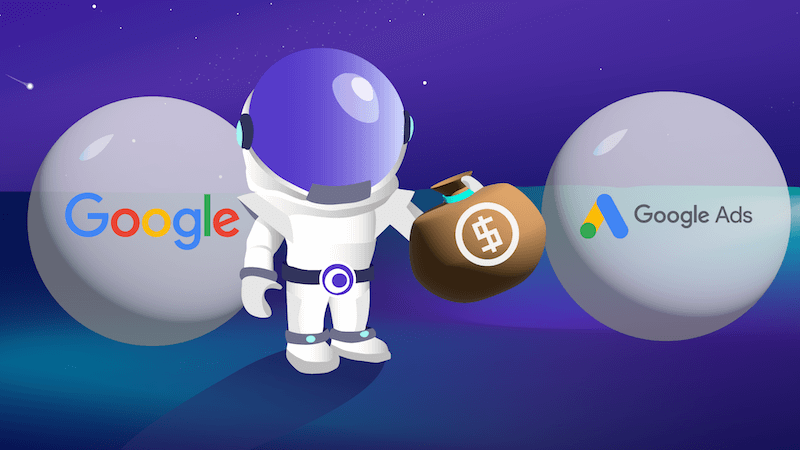
To be successful in your B2B marketing and sales, it’s crucial to focus on the benefits your product brings to the customer, rather than just describing its features.
Your potential customers don’t care about functionality, but focus on what they can get out of it.
Focusing on benefits helps create a stronger connection with your customers because they can better relate to and understand the value your product brings to their business.
Instead of talking about how your product does XYZ, focus on how much money your customers save with your solution, how much their productivity can increase, etc.
Benefits of focusing on outcomes:
- Increased interest: When customers understand how your product solves their specific problems, they feel more attracted to your product.
- Better conversion rates: By making the tangible benefits clear, you increase the likelihood of potential customers choosing your product.
- Stronger customer loyalty: Customers who experience direct benefits are more likely to stay loyal and recommend your product to others.
How to: Use storytelling to show how your product solves customer problems
Storytelling is an effective way to communicate the benefits your product offers.
By sharing authentic stories, you can make complex benefits more understandable and relatable to your customers.
Trin-for-trin guide:
- Identify problem:
- Talk to your customers to understand their challenges and needs.
- Use customer surveys and feedback to gather data about their experiences.
- Create engaging stories:
- Create stories that show how your product has helped others with similar problems.
- Focus on the emotional and practical aspects of the customer journey.
- Use customer cases and testimonials:
- Include detailed customer cases that show concrete results and transformations.
- Share testimonials from satisfied customers that confirm the value and effectiveness of the product.
- Visualize the benefits:
- Use graphics, videos and infographics to visually highlight key benefits.
- Illustrate before-and-after scenarios to show the difference your product can make to the customer’s business.
Examples of storytelling in practice
- Customer case: “John, a small business owner, was struggling to manage his schedule. After using our product, he was able to automate many of his daily tasks, giving him more time to focus on growth. John saw a 30% increase in productivity within the first three months.”
- Testimonial: “Our new project management tool has really changed the way we work. It has enabled us to meet deadlines more consistently and has significantly improved team communication.” – Maria, Project Manager
By focusing on the benefits and using storytelling, you can create a deeper connection with your customers and make it clear how your product can improve their lives or business.
Your product won’t be bought on hot air and a lot of buzzwords. Tell your potential customers why buying your product is a no-brainer and that it’s an investment rather than an expense.
Keep an eye on your competitors
Monitoring your competitors’ activities and marketing is essential to understand what works in your industry and how you can improve your own strategy.
By analyzing their communications, ads and storytelling, you can adjust your approach by being inspired by their successes.
Why it’s important to monitor competitors
- Understand market trends: By following your competitors, you can gain insight into the latest trends and changes in your industry. You can’t always be the first-mover, but it’s important to keep up with developments and changes in behavior, needs and buying patterns.
- Identify opportunities and threats: Competitor analysis can help you discover opportunities you may have overlooked and identify potential threats you need to be aware of.
- Improve your strategies: By learning from competitors’ successes and mistakes, you can adjust your own strategies and get better results.
How to: Monitoring techniques and tools
- Analyze SEO and PPC strategies:
- Use tools like Morningscore to analyze your competitors’ keywords, backlinks and rankings. This can give you insights into which keywords are driving traffic to their sites and which links are strengthening their authority online.
- Monitor their paid campaigns to see what ads are running and what keywords they are bidding on. This can reveal which products or services they are focusing on.
- Follow social media activities:
- Keep an eye on your competitors’ social media profiles. Analyze their content strategy, engagement and follower growth. Identify which types of content generate the most interaction and get inspiration for your own content marketing.
- Use social media monitoring tools to track mentions and hashtags related to your competitors.
- Monitor your competitors’ social media ads to understand what and how they communicate to potential customers. Use Facebook’s ad library to keep an eye on what ads they are running.
- Monitor content marketing:
- Follow their blogs, sign up for their newsletters and other content channels. Analyze what topics they cover and how they interact with leads. Find the gaps in their content where you can offer something unique or get inspiration to cover your own gaps.
Sales, marketing and support must be one unit
It’s important in B2B that sales, marketing and support work closely together to create a cohesive customer experience.
When your departments are synchronized, they can share information, coordinate their efforts and work towards common goals. This not only results in a better customer experience, but also increased efficiency.
Why collaboration is essential
- Improved customer experience: When sales, marketing and support work as one unit rather than 3, customers get a consistent experience across all touchpoints.
- Efficiency: Synchronizing departments can reduce duplication of tasks and allow resources to be used efficiently. This optimizes costs and productivity among your employees.
- Better data insights: When all departments share data, the company gains a holistic understanding of the customer. This can help identify trends and opportunities, as well as lead to better decisions and higher success rates in closing rates.
How to: Implementing collaboration
1. Have regular meetings:
- Purpose: To ensure all departments are aligned with company goals, methods and strategies.
- Frequency: Hold weekly or monthly meetings between sales, marketing and support to discuss status, challenges and upcoming initiatives.
- Content: Use the meetings to share results, discuss customer insights and coordinate campaigns and activities. They can also be used to address communication challenges between departments and ensure that inconsistencies are resolved.
2. Use a shared CRM system:
- Data sharing: A common CRM system enables all departments to share information about customers and leads. This ensures that everyone has access to the same data and can work from a common understanding with the same knowledge.
- Collaboration: Use the CRM to track interactions and ensure all departments are up to date. This can prevent misunderstandings and improve collaboration.
- Automation: Implement automated processes to streamline workflow and reduce manual work. This can include automated follow-ups, lead scoring and customer segmentation.
3. Training and development:
- Education/training: Educate employees on the other departments’ functions and processes. This can increase understanding between departments and improve collaboration.
- Workshops and seminars: Engage in regular training sessions and workshops to update the team on new tools and techniques.

